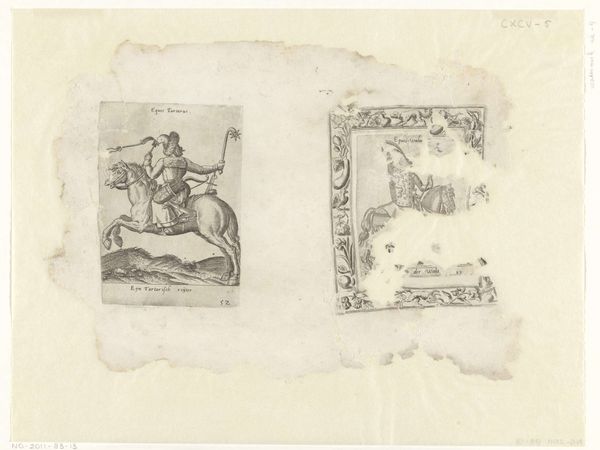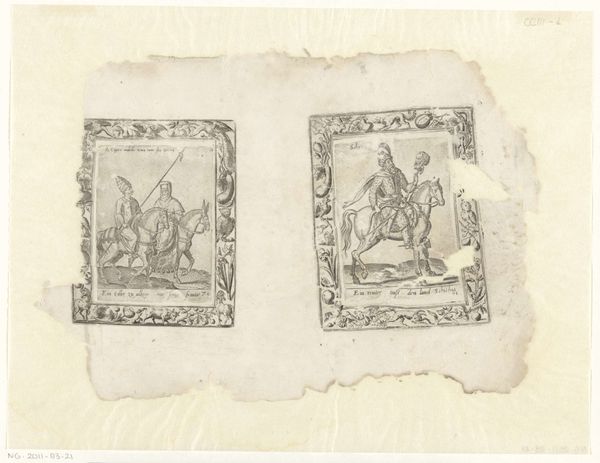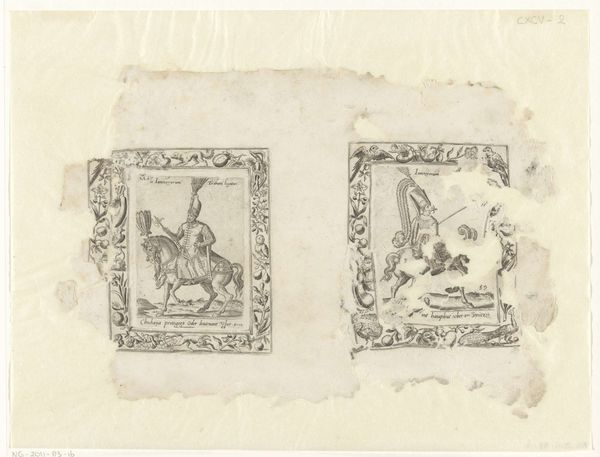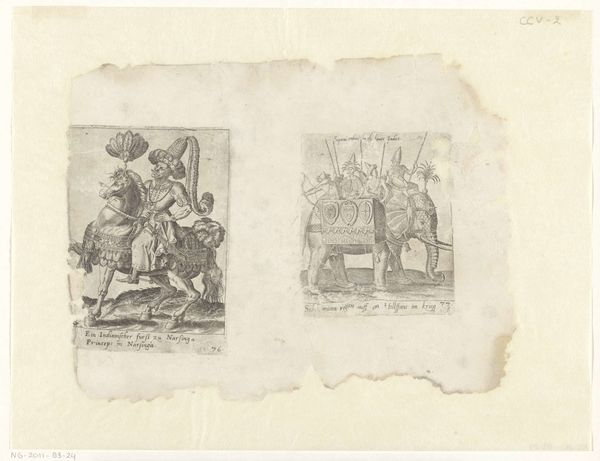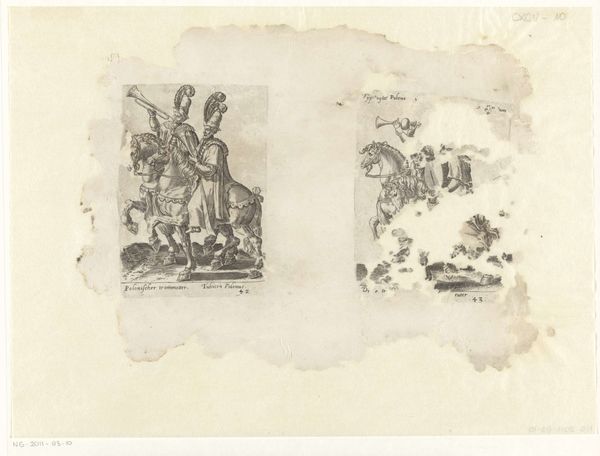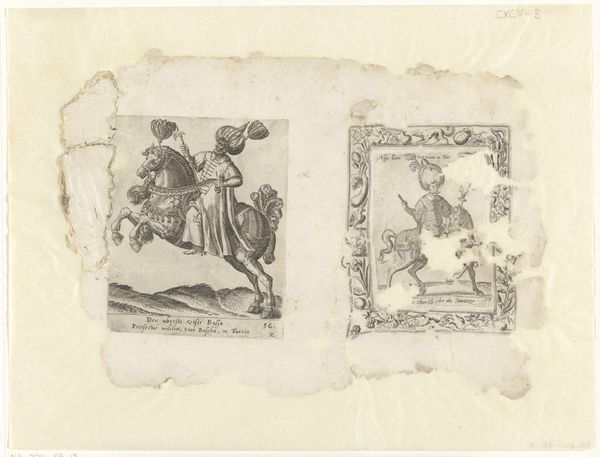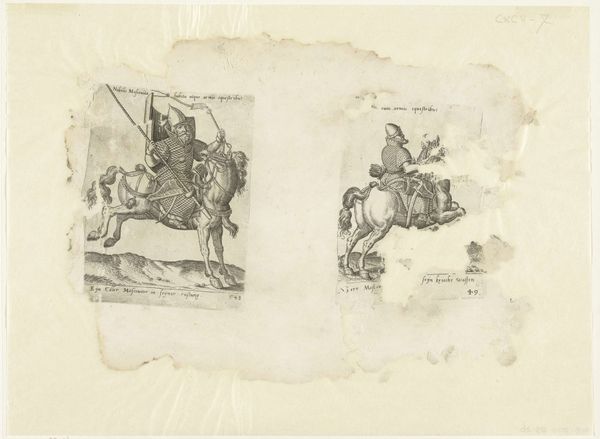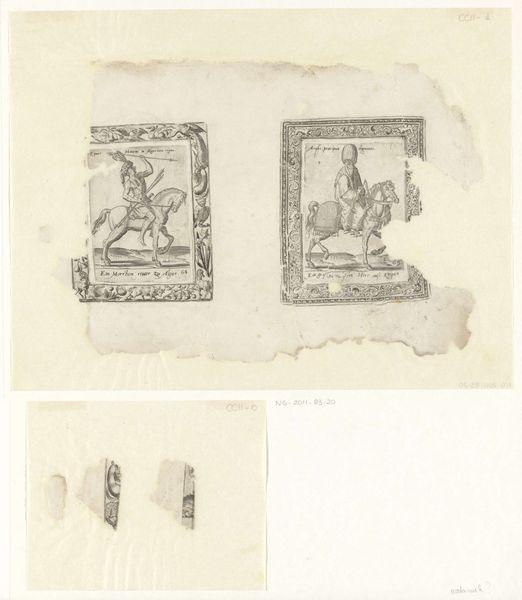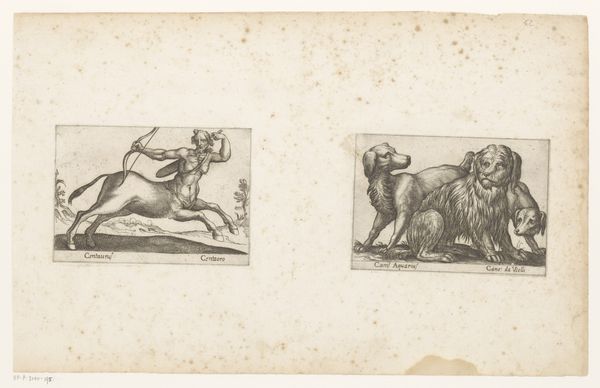
drawing, print, engraving
#
portrait
#
drawing
# print
#
11_renaissance
#
geometric
#
history-painting
#
engraving
Dimensions: height 234 mm, width 310 mm
Copyright: Rijks Museum: Open Domain
These prints, "Arabier op kameel en Indiase ruiter," were etched by Abraham de Bruyn in the late 16th century. De Bruyn, working in a time of increased global exploration and trade, captures his era's fascination with the "exotic." In these images we see an Arab man on a camel and an Indian rider on horseback, both framed by decorative borders. These prints reflect early globalization and the interactions between Europe and the East. But what narratives do they perpetuate? How do these portrayals play into European fantasies of otherness? Do they uphold traditional representations or offer alternative narratives? Consider how the identities of the Arab and Indian figures are constructed through the lens of a European artist. These prints offer insight into the complexities of cultural exchange, power dynamics, and representation during the Renaissance. They ask us to reflect on the emotional and personal dimensions of cross-cultural encounters.
Comments
No comments
Be the first to comment and join the conversation on the ultimate creative platform.


